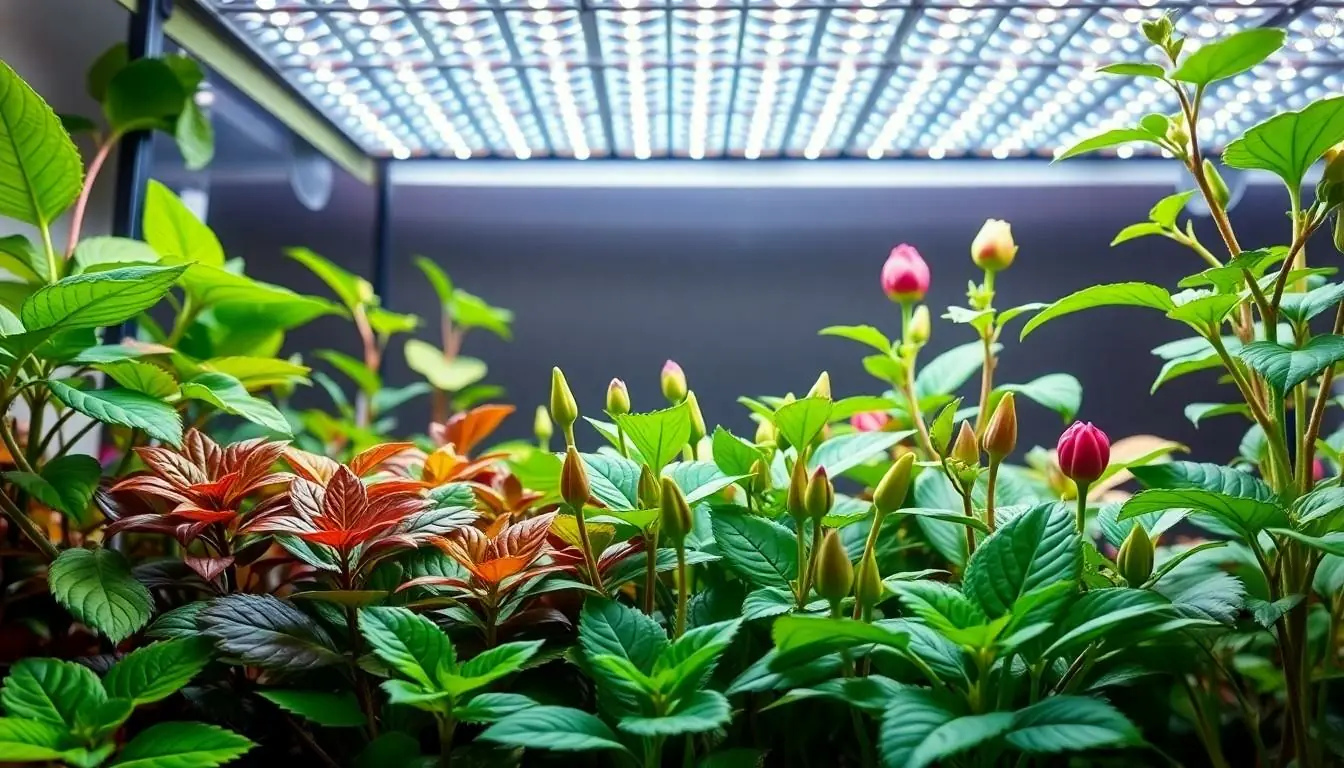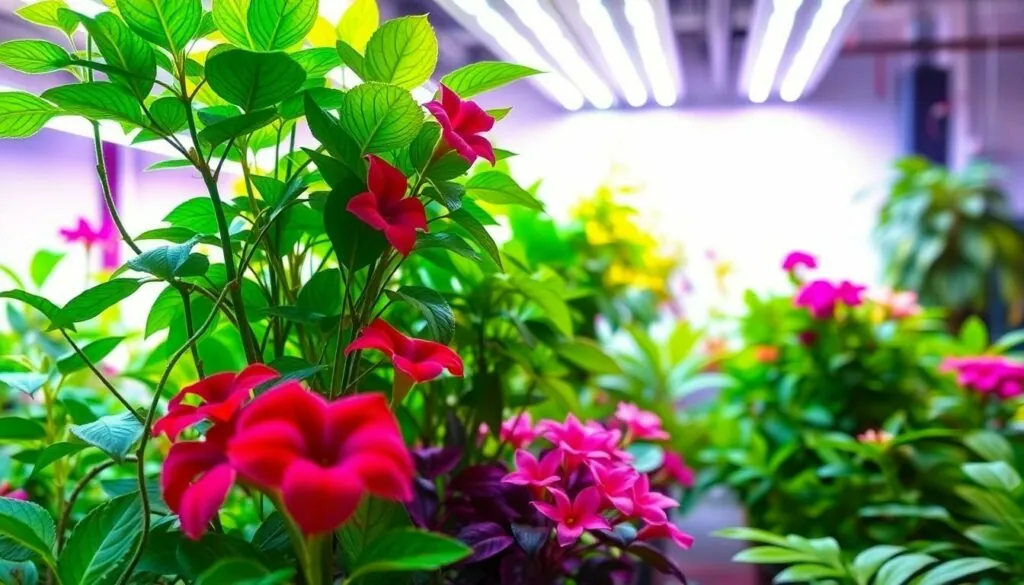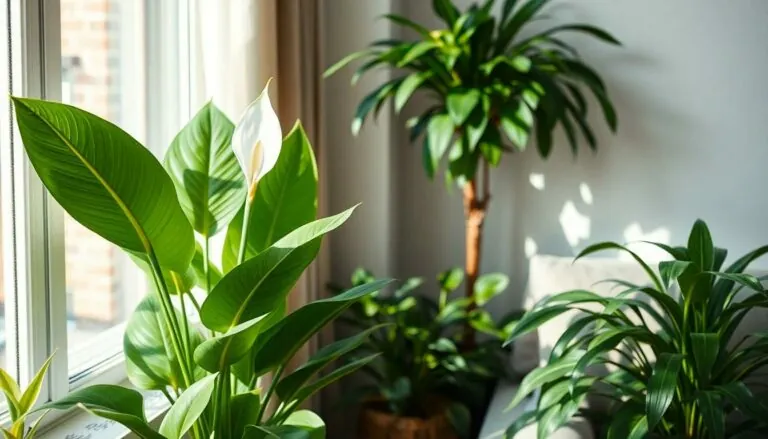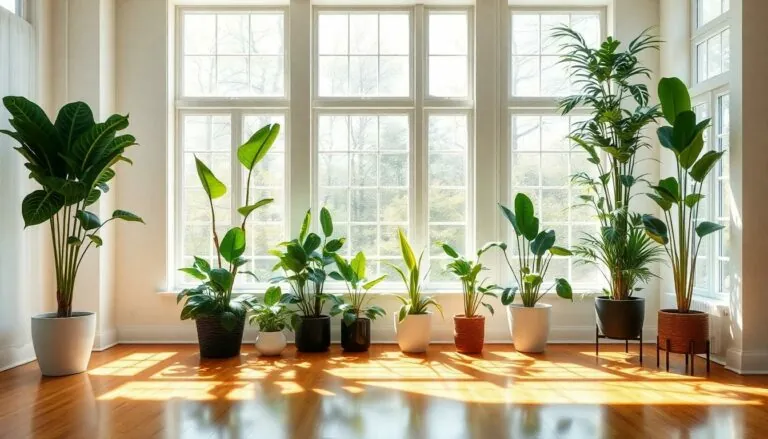Table of Contents
ToggleIndoor gardening enthusiasts know the struggle of keeping plants happy and healthy without natural sunlight. Enter full spectrum LED grow lights—like a superhero for your indoor jungle. These lights mimic the sun’s rays, providing everything plants need to thrive, even when the weather outside is less than ideal.
Imagine your leafy friends soaking up the light they crave, turning your living room into a vibrant oasis. With full spectrum LEDs, plants grow faster, bloom brighter, and even seem to smile a little more. Plus, they’re energy-efficient, so your electricity bill won’t send you into a panic. If you’re ready to elevate your indoor gardening game and give your plants the royal treatment, it’s time to shine a light on full spectrum LED grow lights.
Overview of Full Spectrum LED Grow Lights
Full spectrum LED grow lights replicate natural sunlight, providing essential light wavelengths for optimal plant growth indoors. These lights support various growth stages, making them ideal for any indoor gardening setup.
What Are Full Spectrum LED Grow Lights?
Full spectrum LED grow lights emit a broad range of wavelengths, including red, blue, and green light. This spectrum mimics sunlight, enabling plants to photosynthesize effectively. LED technology ensures low heat output, reducing the risk of plant damage. Various brands offer different models, with some designed specifically for certain plant types.
Benefits of Full Spectrum LED Grow Lights for Indoor Plants
Full spectrum LED grow lights accelerate plant growth due to their comprehensive light output. Brighter blooms result from enhanced photosynthesis, leading to more vibrant flowers and foliage. Energy efficiency marks another significant advantage, as these lights consume less electricity compared to traditional grow lights. Using these lights minimizes heat, reducing the need for cooling systems. Indoor gardeners achieve more successful yields by providing optimal lighting conditions.
How Full Spectrum LED Grow Lights Work

Full spectrum LED grow lights operate by mimicking the natural sunlight spectrum, crucial for indoor gardening success. Their diverse light emission supports various phases of plant growth.
Light Spectrum and Plant Growth
Light spectrum plays a vital role in photosynthesis. Full spectrum LEDs emit wavelengths across the visible light range, including blue, red, and green. Blue light promotes vegetative growth, aiding leaf and stem development. Red light stimulates flowering and fruiting, leading to higher yields. Green light, while less absorbed, enhances leaves’ appearance and contributes to deeper penetration into plant foliage. Overall, the combination of these wavelengths helps optimize plant health and vitality.
Photoperiod and Plant Responses
Photoperiod influences how plants respond to light exposure. Full spectrum LED grow lights can simulate day and night cycles, providing flexibility in light management. Plants depend on specific light durations for critical processes such as flowering. Adjusting the light cycle can encourage plants to enter their flowering phase. By managing light exposure, indoor gardeners can significantly impact growth rates and flowering cycles, enhancing overall plant performance.
Choosing the Right Full Spectrum LED Grow Lights
Selecting full spectrum LED grow lights involves understanding specific features that enhance indoor plant growth. It’s essential to analyze various factors including light intensity, wattage, and spectrum characteristics.
Factors to Consider
Light intensity significantly affects plant growth. Higher intensity supports healthier plants, especially for flowering and fruiting stages. Wattage indicates energy consumption, and lower wattage often results in reduced electricity costs. Spectrum characteristics matter as blue light supports vegetative growth while red light encourages flowering. The grow space size also influences light choice; larger areas may need stronger or additional lights. Durability and heat output should be evaluated to prevent plant damage.
Top Brands and Models
Several brands lead in producing reliable full spectrum LED grow lights. Spider Farmer and HLG create popular models known for their efficiency and performance. The SF series from Spider Farmer features adjustable brightness settings for tailored light exposure. HLG’s Quantum Board, with its even light distribution, is favored for larger indoor gardens. Mars Hydro offers diverse options that cater to various plant types and growth stages. These brands provide excellent customer support and warranties, ensuring satisfaction and reliability.
Installation and Setup
Setting up full spectrum LED grow lights requires careful consideration. Proper installation and positioning enhance their effectiveness.
Placement and Height
Positioning lights correctly maximizes coverage and light exposure. Place lights 12 to 24 inches above plant foliage, facilitating healthy growth across various stages. Consider the specific needs of different plant types, as some may require closer proximity for optimal light absorption. Adjust height based on plant growth; seedlings typically need closer light while mature plants require greater distance. Ensure even light distribution to avoid shadows, which can hinder growth. Observing plants closely aids in identifying any signs of light stress or insufficient exposure.
Electrical Requirements
Electrical requirements play a crucial role in setting up full spectrum LED grow lights. Verify the voltage compatibility of the chosen lights with your power source, ensuring they match the local supply. Calculate total wattage to avoid overloading circuits; using multiple lights without consideration can lead to safety hazards. Install sockets or extension cords rated for the total wattage utilized. Utilize timers or smart plugs for effective light scheduling, promoting optimal growth cycles. Always follow manufacturer guidelines regarding installation for safety and efficiency.
Tips for Maximizing Growth with Full Spectrum LED Grow Lights
Maximizing growth with full spectrum LED grow lights involves strategic planning and adjustments. Proper timing and duration of light exposure significantly influence plant health and productivity.
Timing and Duration
Plants thrive on a consistent light schedule. A 12 to 16 hour light cycle suits most indoor plants during their growth phase. Adjusting the timing allows for transitioning between vegetative and flowering stages, which is crucial. Keeping track of growth stages ensures that plants receive the right light duration. Using timers simplifies this process, ensuring the plants get sufficient rest during the dark period.
Combining with Other Lighting Techniques
Integrating additional lighting techniques can enhance overall plant growth. Utilizing supplemental lighting, such as fluorescent or high-intensity discharge lights, can provide extra intensity during critical growth phases. Combining different light sources caters to the specific needs of plants, optimizing light spectrum and intensity. Ensuring an even distribution of light enhances coverage in broader grow spaces. Monitoring plant responses helps in fine-tuning the combination of techniques for maximum effectiveness.
Full spectrum LED grow lights are a game changer for indoor gardening. They not only mimic natural sunlight but also provide the essential wavelengths needed for optimal plant growth. By investing in these lights, indoor gardeners can achieve faster growth and more vibrant blooms while keeping energy costs low.
Proper installation and timing play crucial roles in maximizing their benefits. With careful attention to light intensity and positioning, plants can thrive in any environment. As indoor gardening continues to grow in popularity, full spectrum LEDs will remain a top choice for those looking to enhance their plant care and achieve impressive results.






